calsfoundation@cals.org
Titan II Missile Explosion (1980)
The Titan II Launch Complex 374-7 in Southside (Van Buren County), just north of Damascus (Van Buren and Faulkner counties), became the site of the most highly publicized disaster in the history of the Titan II missile program when its missile exploded within the launch duct on September 19, 1980. An Air Force airman was killed, and the complex was destroyed. The Titan II Missile Launch Complex 374-7 Site was listed in the National Register of Historic Places on February 18, 2000.
Complex 374-7 had already been the site of one significant accident on January 27, 1978, when an oxidizer leak sent a cloud of toxic fumes 3,000 feet long, 300 feet wide, and 100 feet high drifting across U.S. Highway 65. Civilians were evacuated from the area, and four people suffered some ill effects from contact with the vapors. The leak was quickly repaired.
On September 18, 1980, at about 6:30 p.m., an airman conducting maintenance on the Titan II missile dropped a wrench socket, which fell about eighty feet before hitting and piercing the skin on the rocket’s first-stage fuel tank, causing it to leak. The commander of the 308th Strategic Missile Wing quickly formed a potential-hazard team, and by 9:00 p.m., the Air Force personnel manning the site were evacuated. About one hour later, Air Force security police began evacuating nearby civilian residents as efforts continued to determine the status of the missile and the fuel leak.
Airmen Rex Hukle and Greg Devlin were the first to enter the complex, under orders to cut down a security fence and then break through a steel outer portal that had an electromagnetic lock. They accomplished this using a crowbar and other tools. They were unable, however, to open the inner blast doors. Senior Airman David Livingston and Sergeant Jeff K. Kennedy then entered the launch complex early on the morning of September 19 to get readings of airborne fuel concentrations, which they found to be at their maximum. At about 3:00 a.m., the two men returned to the surface to await further instructions. Just as they sat down on the concrete edge of the access portal, the missile exploded, blowing the 740-ton launch duct closure door 200 feet into the air and some 600 feet northeast of the launch complex. The W-53 nuclear warhead landed about 100 feet from the launch complex’s entry gate; its safety features operated correctly and prevented any loss of radioactive material. Kennedy, his leg broken, was blown 150 feet from the silo. Livingston lay amid the rubble of the launch duct for some time before security personnel located and evacuated him. Livingston died of his injuries that day. Twenty-one people, including Hukle and Devlin, were injured by the explosion or during rescue efforts.
In early October 1980, cleanup operations gathered tons of debris from around 400 acres surrounding the launch complex and pumped some 100,000 gallons of contaminated water from the silo. The total cost to replace Launch Complex 374-7 was estimated at $225,322,670, while demolition and cleanup were expected to cost $20,000,000. Ultimately, the Air Force decided to seal the complex with soil, gravel, and small concrete debris.
A congressional inquiry into the accident found the Titan II missile program to be essentially reliable. It recommended, however, improved communications between the Air Force and local officials in case of accidents and a modification of the Air Force’s policy of neither confirming nor denying the presence and condition of nuclear weapons at an accident site.
Six Air Force servicemen—Livingston (posthumously), Kennedy, Hukle, Devlin, Don Green, and Jimmy Roberts—were awarded Airman’s Medals for Heroism in May 1981 for their actions (though Kennedy had earlier received an official reprimand), and the Titan II maintenance structure at Little Rock Air Force Base was later designated the Livingston Building in honor of Livingston.
The 1980 Titan II explosion was the subject of the 2013 book Command and Control: Nuclear Weapons, the Damascus Accident, and the Illusion of Safety, written by investigative journalist Eric Schlossser; the book was later adapted into a documentary.
For additional information:
Anthony, Michael. “Geriatric Giants: Poisonous Leaks at Arkansas’s Titan II Facilities, 1974–1980.” Arkansas Historical Quarterly 81 (Spring 2022): 46–67.
———. “The Sleeping Giant: The Effects of Housing Titan II Missiles in Arkansas and Kansas from 1962 to 1987.” MA thesis, University of Arkansas, 2018. Online at https://scholarworks.uark.edu/etd/2808/ (accessed July 6, 2022).
Cold War Resources Associated with the 308th Strategic Missile Wing in Arkansas Multiple-Property Submission Historic Context. On file at Arkansas Historic Preservation Program, Little Rock, Arkansas.
Fellone, Frank. “Explosive Era: Tour Visits Site Where Titan II Blast in 1980 Sent Warhead Flying.” Arkansas Democrat-Gazette, September 21, 2015, pp. 1E, 6E. Online at http://www.arkansasonline.com/news/2015/sep/21/explosive-era-20150921/ (accessed May 16, 2023).
Schlosser, Eric. Command and Control: Nuclear Weapons, the Damascus Accident, and the Illusion of Safety. New York: Penguin, 2013.
Stumpf, David K. “We Can Neither Confirm Nor Deny.” In Sentinels of History: Reflections on Arkansas Properties on the National Register of Historic Places, edited by Mark K. Christ and Cathryn H. Slater. Fayetteville: University of Arkansas Press, 2000.
———. Titan II: A History of a Cold War Missile Program. Fayetteville: University of Arkansas Press, 2000.
Mark K. Christ
Arkansas Historic Preservation Program
 Divergent Prosperity and the Arc of Reform, 1968–2022
Divergent Prosperity and the Arc of Reform, 1968–2022 Military
Military Titan II Missile Accident (1965)
Titan II Missile Accident (1965)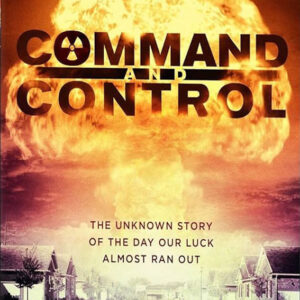 Command and Control Poster
Command and Control Poster 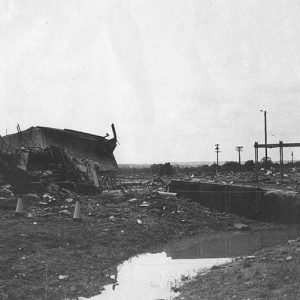 Explosion Debris
Explosion Debris 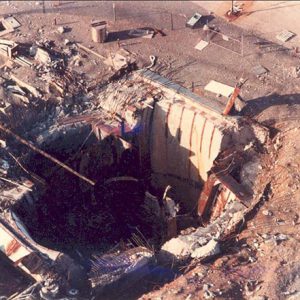 Silo Damage
Silo Damage 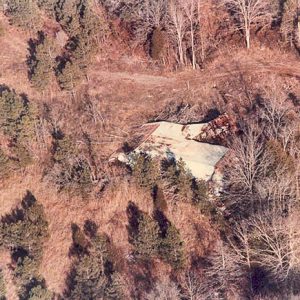 Silo Door
Silo Door 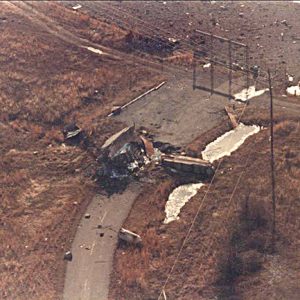 Titan II Facility Entrance
Titan II Facility Entrance 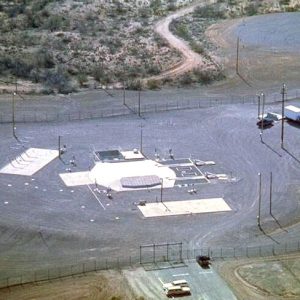 Titan II Missile Complex
Titan II Missile Complex  Titan II Missile Convoy
Titan II Missile Convoy 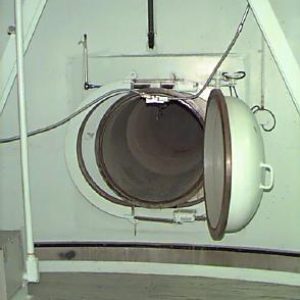 Titan II Missile Escape Hatch
Titan II Missile Escape Hatch 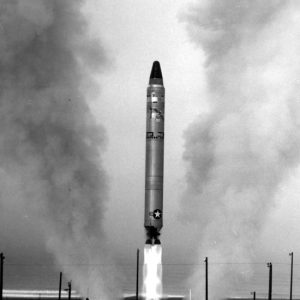 Titan II Missile Launch
Titan II Missile Launch 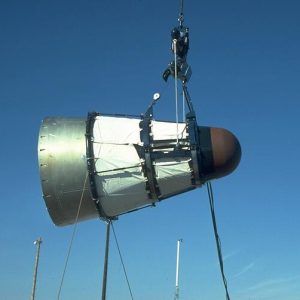 Titan II Missile Warhead
Titan II Missile Warhead 




Just finished reading Eric Schlosser’s Command and Control. Recommended reading for anyone interested in the “blow-by-blow” narrative of the explosion and the underlying causes. The book also goes into detail about a) how nuclear warheads are designed and function; b) how the inflexible military mind-set (USAF Strategic Air Command) against reasonable safety measures contributed to the problem and how, to this day, it continues to resist control of nuclear weapons being put into the hands of civilians; and c) the continued threat of a nuclear Armageddon that persists despite the end of the Cold War.
Before Jeff Kennedy and David Livingston were able to enter the complex, Rex Hukle and I had to cut through a security fence and physically break through an electrically locked steel portal door using a crowbar, screwdrivers, and hammers. We then went down two flights of steps to start pumping open a 6,000 lb. blast lock door (which we were unable to open because our air was running low, and time was running out). We were the first two guys to enter the complex for the mission and to our knowledge, the ONLY two guys in history to “break into” a nuclear missile complex (although it WAS at the request of our supervisors). There were many more people besides Rex and me out there that night who were injured. Rex and I had a traumatic near-death experience, too. When the Titan exploded, I was standing right at the entry gate, half suited up in my RFHCO suit, and I was blown 50 to 60 feet, landing on my back with concrete, steel, and flames going past my face. Rex was at the back of the pickup truck and leaped into the truck, shattering his knee cap and burning his hands. That same truck had a chunk of concrete go right through the hood of the truck, landing in the carburetor. It would have killed him if it had landed on him. If it hadn’t been for two blood-curdling screams in my left ear to RUNNNNNN (from my guardian angel) I would have been the first person to die on the scene, because I would have been crushed by the concrete that landed just behind me as I was on the run. To this day, I’m amazed that God kept me alive.
I was a nuclear weapons Spec 2 and stationed at Little Rock AFB 308 MIMS. I was there, and to set the record straight, the W-53 warhead was a 50 megaton warhead–that’s right BIG boom. We were down-grading all warheads to 20 Megs during this time. All silos were being modified because of SALT II. The careless hurry-up program to achieve this modification caused this situation. Yes, I recovered this warhead and it was breached. The tritium boost canister was leaking. Dead animals were everywhere, and the contamination was not from propellant.
I was forcibly discharged September 18, 1980; guess I had seen too much.
Many of us doing this downgrade were exposed to open warhead radiation and very dangerous situations. That’s why the Air Force abandoned this MOS and disbanded the teams under total secrecy warnings.
According to Eric Schlosser’s book Command and Control, page 3: “inside it sat a W-53 thermonuclear warhead, the most powerful weapon ever carried by an American missile. The warhead had a yield of 9 megatons.” Also: “The core of the W-53 contained highly enriched uranium, not plutonium, largely eliminating the inhalation hazard and the risk of radioactive contamination.”
Just finished reading Eric Schlosser’s new book: Command and Control: Nuclear Weapons, the Damascus Accident, and the Illusion of Safety. As a TV news photographer who was there the night the missile blew up, I highly recommend this book. It is the most thorough narrative account of that tragic event yet written.
I was the Arkansas Democrat‘s night police reporter, based in Pulaski County, when the newsroom received the first reports about the leak at the silo near Damascus. I arrived late that night and joined other reporters and crews who parked along the highway near the gate. When the silo exploded in the early morning hours, I remember standing in stunned silence, watching huge chunks of burning debris in the air–presumably the concrete doors on the silo, which sparked against the night sky like nightmarish fireworks, and the pinkish-orange cloud that arose over the area. Acrid, irritating fumes with a strong chemical taste filled the air, and the airmen all donned gas masks–itself a terrifying sight to those of us without them. As I fled to my car amid the smoke, burning rubble, and people screaming and running in all directions, I asked an airman, “How far should I go?” He pulled off his mask long enough to yell, “As far as you can, as fast as you can!” I had a motel room reserved in Conway, to the south, but my car was pointed north. I took his advice, didn’t take time to turn around, and nearly crashed when, at 80 miles per hour, I encountered barricades the Air Force had placed on the highway north of silo. I didn’t stop until I reached Marshall, where I called in stories to the Democrat and New York Post from a pay phone at a Piggly Wiggly store. I didn’t know until I read your article that, immediately after the explosion, I was standing within 100 to 200 feet of the warhead the Air Force refused to confirm or deny for so long.
My older brother lived in Clinton, Arkansas, at the time. He said when they came to evacuate him and the family with the sheriff, when they walked out there was a red dense fog everywhere. A couple of years later, my brother was thirty-nine years old and died of cancer: Hodgkin’s lymphoma. His wife that he was with, and all three of her sons (who were older) all died of cancer, and she also died of cancer, and I know in my heart it was because of the silo exploding. I believe they owe my family and Owen big and should compensate them, especially me for losing my older brother. I demand it!